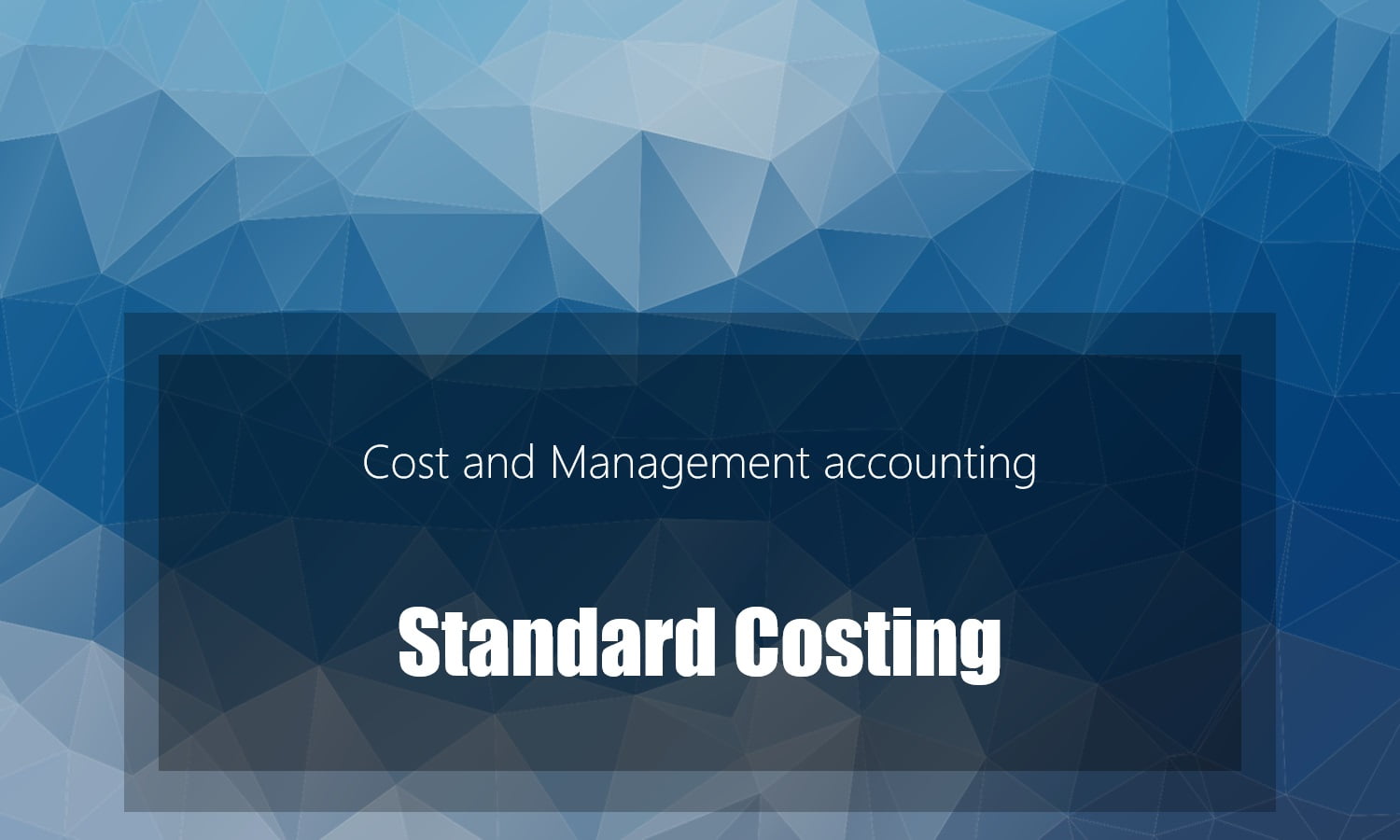Read more
- Introduction to Cost and Management Accounting
- High/Low and Linear Regression Analysis
- Inventory Management
- Accounting for Inventory
- Accounting for overheads
- Absorption Costing
- Marginal Costing
- Job Batch and Service costing
- Process Costing
- Target Costing
- Variances
- Standard Costing
- Cost Volume Profit analysis
- Relevant costing and Decision-Making Techniques
- Time Value of Money (TVM)
Standard Costing Overview
Standard cost
- A standard cost is an estimated/predetermined unit cost of performing an operation or producing a good or services under normal conditions.
- The predetermined unit cost (standard cost) is based on expected direct materials quantities and expected direct labour time and priced at a predetermined rate per unit of direct materials and rate per direct labour hour and rate per hour of overhead.
- Overheads are normally absorbed at direct labour hour.
Standard costing
- Standard costing is a control technique that report variances by comparing actual cost to pre-set standards. Standard costing may use; absorption or marginal costing.
Types of Standard
Types of Standard
Ideal Standard
This assumes perfect operating conditions.
No allowance for wastage is made.
Unlikely to be achieved.
Reported variance is always adverse
This assumes efficient but not perfect operating conditions.
An allowance for wastage is made.
Attainable targets.
These are based on current working conditions.
Includes an allowance for the expected wastage or idle time.
This remains unchanged over a long period of time.
Variances are calculated by comparing actual results with basic standard.
- Idle time are the hours for which the direct labour employees are paid for no work.
- Idle time is recorded and the hours lost due to idle time are measured.
Methods of including idle time in standard costs
As a separate elements of standard cost
- Standard of idle time is a part of Total standard cost per unit.
Allowance for expected idle time
- Allows for a standard amount (pre-set amount) of idle time in standard hours per unit of each product, therefore including an allowance for expected idle time.
Budget
- Budget: A budget is a formal plan (for a specified time period) covering all the activities of the entity.
- It is a statement of what the entity is going to strive to achieve in future.
- Standard costing is a component of budgeting.
- Standard costs for a unit are often set out in record called a standard cost card.
- It is the original budget prepared at the beginning of a budget period.
- It is prepared for a specific volume of output and sales activity.
- It is the master plan for the financial year that company tries to achieve.
- Variances are NOT calculated by comparing actual results to fixed budget directly.
- It is drawn-up at the end of the period.
- It is based on the actual levels of activity and standard revenue and standard costs.
- This shows the amount that the company would have received for the actual number of units sold if they had been sold at the budgeted revenue per item.
- Variances are calculated by comparing actual results with flexed budget.



Leave a Reply
You must be logged in to post a comment.